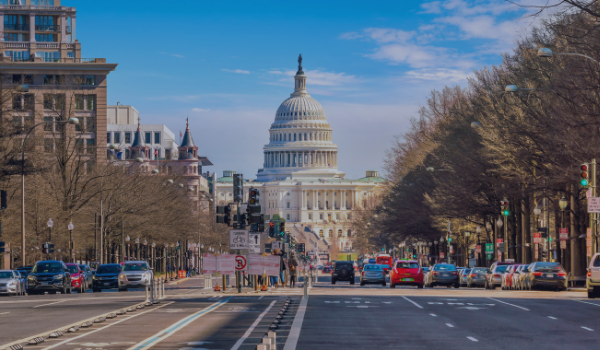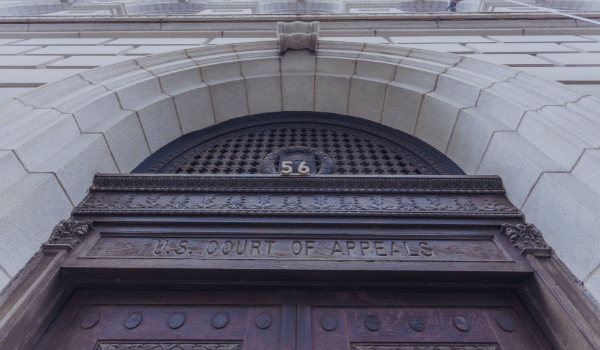For the first time in recorded history, the IRS has publicly withdrawn its challenge of a captive insurance company and has conceded the taxpayer’s deductions. We know this because of a recent Order and Decision of the Tax Court entered in the case, Paul Puglisi and Ann Marie Puglisi, et. al. v. Commissioner of Internal Revenue, on November 5, 2021.
Before we continue, we need to discuss the procedural posture of this case. There was no trial; therefore, no opinion. The IRS conceded before the case could be tried, because it presumably was afraid of an adverse outcome. After executing a stipulation with the Petitioners conceding substantially all of their deductions, the IRS brought a motion for entry of decision in accordance with the stipulation. The Petitioners objected to the motion for entry of decision on the grounds that they were entitled to a decision on the merits. But, because there was no trial, the Tax Court heard no evidence and made no findings of fact.
In ruling on the motion for entry of decision and the Petitioner’s objections, it adopted certain of the factual allegations made by the Petitioners and then ruled on the motion as a matter of law. As a result, the facts stated below are not findings of fact by the Tax Court, but allegations made by the Petitioners and accepted as true by the Tax Court for purposes of ruling on the motion for entry of decision.
THE FACTS
The Petitioners were the owners of Puglisi Egg Farms of Delaware, LLC (Puglisi Egg Farms), an egg farm in Delaware with over 1.2 million egg-producing hens. Like any business, Puglisi Egg Farms bought commercial insurance to protect itself from potential risks. However, when it was unable to buy commercial insurance to protect against the avian flu, the Petitioners formed a captive insurance company to provide that coverage.
The Petitioners’ captive insurance company was domiciled in Delaware. The captive did not write direct insurance but served as a reinsurance company. Puglisi Egg Farms bought insurance from a fronting company, which then entered into a reinsurance arrangement with the Petitioners’ captive. Under the reinsurance arrangement:
Petitioners’ captive insurance company . . . reinsures (1) twenty percent of all approved claims of Puglisi Egg Farms of Delaware, LLC, and (2) its quota share of eighty percent of all approved claims of unrelated entities that are insured by (the fronting company).
Left unsaid is the assumption that the remaining eighty percent of all approved claims of Puglisi Egg Farms was ceded by the fronting company to the other captives participating in the fronting company’s reinsurance arrangement.
Since the formation of the Petitioners’ captive in December, 2015, Puglisi Egg Farms had submitted a total of five claims to the fronting company. The Order and Decision is silent on the amount of those claims.
IRS AUDIT
The IRS began an audit of Petitioners and their captive in 2017. Since Puglisi Egg Farms was a limited liability company, the insurance premiums paid by the LLC were reflected as deductions on the Petitioners’ personal returns. In language that will resonate with any target of an IRS audit, the Petitioners claimed that:
The IRS used template document requests (IDRs) with hundreds of questions and subparts and requests for documents resulting in the production of thousands of documents (comprising tens of thousands of pages).
In December, 2019, the IRS issued statutory notices of deficiency to the Petitioners for 2015 and 2016, and in November, 2020, the IRS issued statutory notices of deficiency for 2018. For the three years combined, the IRS assessed tax deficiencies and penalties of more than $2.7m.
THE TAX COURT CASE
When a taxpayer receives a statutory notice of deficiency, the taxpayer has the right to file a lawsuit in the Tax Court challenging the assessment. That is what happened here. The Petitioners filed their first case challenging the 2015 and 2016 assessments in March, 2020, and their second case challenging the 2018 assessment in December, 2020. After the second case was filed, the two cases were consolidated for further proceedings, including discovery and trial.
And, boy, did the IRS engage in discovery:
Once the cases moved into the Tax Court, Petitioners responded to over 200 discovery requests (with approximately 125 subparts), and produced more than 1,000 additional documents (comprising nearly 10,000 pages).
Petitioners incurred fees for hundreds of hours of legal work during Respondent’s examinations and thousands of hours of legal work to prepare these cases for trial.
THE IRS CONCEDES
For reasons unstated in the Tax Court’s Order and Decision, the IRS conceded the Petitioners’ deductions after discovery, but before trial. In April, 2021, the Petitioners and the IRS entered into an agreement that the Petitioners were entitled to most of the deductions taken in 2015 and 2016. In fact, in its motion for entry of decision, the IRS asked the Tax Court to order that the deficiency for 2015 was only $18,587,00; that there was no deficiency for 2016; and that there were no penalties due for either 2015 or 2016.
THE PETITIONERS OBJECT
The Petitioners objected to the entry of decision before trial and a ruling on the merits of their case. An IRS audit is not a pleasant experience. The Petitioners had incurred significant legal fees and disruption to their business. The IRS had accused the Petitioners of engaging in unlawful tax avoidance, and the Petitioners believed that they were entitled not only to relief from the alleged tax deficiencies and penalties but also to vindication of their captive insurance transaction.
Although Respondent has had the benefit of most of Petitioners’ responses and documents for years, Respondent has now concluded that he wants to abandon the tax deficiencies asserted in his notices of deficiency, apparently because he recognizes the Petitioners’ cases are not the litigation vehicles that he wants to use to present his theories to this Court. But while Respondent is willing to abandon the asserted deficiencies, he is not willing to concede the inaccuracy of his determinations underlying the adjustments . . . [The motions for entry of decision make a] strategic attempt to concede the overall amounts at issue, in order to avoid an adverse ruling on specific determinations in the notices of deficiency . . .
Respondent’s approach leaves Petitioners without the relief they sought by filing the Petitions in the Tax Court. The deductibility of the insurance premiums paid to Series A is a recurring issue, because Petitioner’s business relies on the insurance coverage provided by Series A and continues to purchase it every year. Furthermore, there are hundreds of other business owners that pay insurance premiums to Series A and the other insurance fronting carriers and are reinsured in part by Series KF. Many of these entities are currently under IRS examination.
Although Series A is an insurance company, licensed by the Delaware Department of Insurance, the IRS still contends (notwithstanding its purported concession here) that Series A is not an insurance company for Federal income tax purposes. Petitioners and similarly situated taxpayers need clarity on whether their insurance premiums are deductible for their current and future tax return filing obligations.
(Series A is the fronting company, and Series KF is the Petitioners’ captive.)
THE TAX COURT AND HOME-FIELD ADVANTAGE
Many people believe that the Tax Court is nothing more than an appendage of the IRS; that the Tax Court provides a “home-filed advantage” to the IRS to the detriment of ordinary taxpayers. Nothing that happened in this case will disabuse those people of that notion.
The Tax Court overruled the Petitioners’ objections and entered a decision as requested by the IRS. The Tax Court’s reasoning is something that only a professor of law would appreciate.
First, the Tax Court noted that this case was a deficiency case and that “(s)tated simply, a deficiency is an amount”. When the IRS determines a deficiency, and the taxpayer has filed “a petition with the Tax Court for a redetermination of the deficiency”, the role of the Tax Court is simply to determine the correct amount of the deficiency, not to review how the IRS arrived at the alleged deficiency.
Rather, the point in a deficiency case is to “redetermine the amount” of the deficiency determined in the SNOD (statutory notice of deficiency) as to a particular taxpayer for a particular year, not to publish commentary on the law or to offer assistance on matters other than the deficiency before the Court.
The Tax Court ignored the fact that, when a taxpayer receives a statutory notice of deficiency, its only recourse, other than paying the deficiency, is to bring an action in the Tax Court challenging the deficiency. And, most often, the taxpayer is not simply challenging the amount of the deficiency, but whether there is a legal basis for the imposition of a deficiency in the first place. So, one might ask how a Court can determine the correct amount of a deficiency without an explanation of the law that supports the existence of the deficiency. The Tax Court had an answer for that.
The Tax Court said that the IRS filed a motion for entry of a decision, which is the equivalent of a district court’s judgment. “A decision in a deficiency case is an order specifying the amount of the deficiency.” The Tax Court contrasted a decision with a “report”, which is the equivalent of an opinion. The Tax Court’s report or opinion is where the Tax Court explains its decision. In contrast, in a deficiency case, a decision is nothing more than a number.
In this case, the IRS asked for entry of a decision. It did not ask for a report or opinion. As a result, the Tax Court was not required to issue a report or opinion explaining the legal basis for the tax deficiency. It was only required to enter a decision stating the correct amount of the deficiency. The Tax Court could enter a decision without an opinion because the Petitioners and the IRS had agreed on the correct amount of the deficiency. Further, because the IRS had conceded the tax deficiencies, the Petitioners had essentially won, and the decision entered by the Tax Court was in their favor.
The Tax Court acknowledged that the IRS had conceded the Petitioners’ tax deficiency as a tactic to avoid an adverse result that would uphold the Petitioners’ captive insurance transaction and shed doubt on its success in cases like Avrahami. But the Tax Court essentially said, “so what”.
[i]f (the Petitioners and other participants in the fronting company’s reinsurance arrangement) had coordinated their efforts and pursued the instant petitions because they were more promising than others as “litigation vehicles” for the taxpayers’ position; nor can we criticize the Commissioner for conceding cases in which his position is weaker in order to devote his resources to litigating cases that are more promising for his position.
So, while the Petitioners in this case were able to escape tax deficiencies and penalties imposed by the IRS, the Tax Court’s decision provides no guidance to the industry; including to the Petitioners, who do not know whether the IRS will challenge their captive insurance company in future years.
ONE SMALL STEP FOR A CAPTIVE, HOW BIG A LEAP FOR THE INDUSTRY?
While a huge accomplishment for the Petitioners, it is difficult to predict how this case will impact the captive insurance industry. The reason is that the Tax Court allowed the IRS to get out of a case that it was bound to lose without a decision on the merits. This means that the IRS was able to avoid an adverse court ruling and escape a case with good facts for the taxpayers without having to provide the industry with any guidance.



